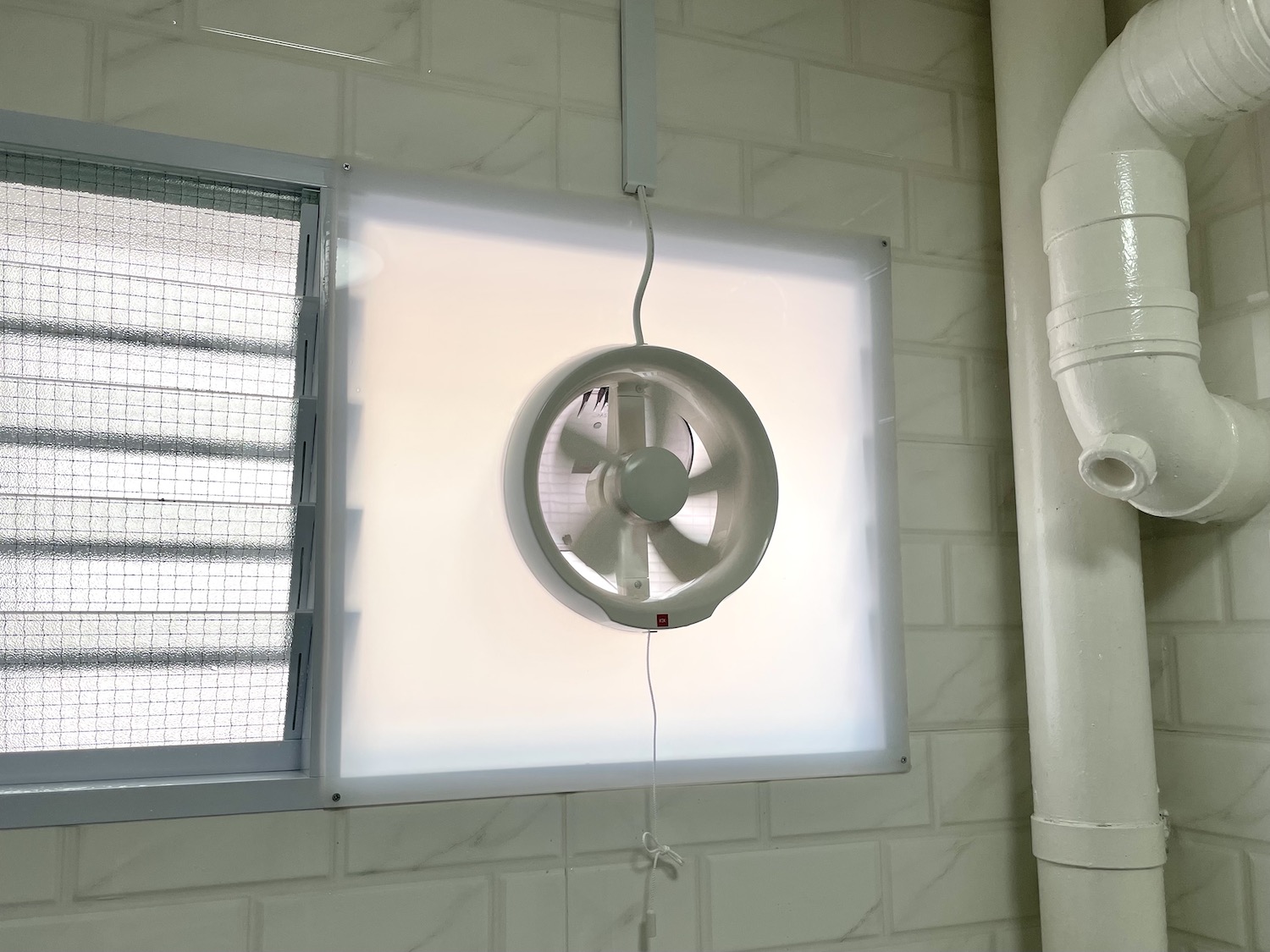Homeowner's Guide to Toilet Exhaust Fans in Singapore
Posted on May 31, 2024

Properties in Singapore are built to insulate its occupants from the scorching sun, but this has resulted in a layout that has poor natural ventilation. Air has a difficult time flowing into and out of these properties and remains trapped inside. This lack of natural ventilation creates a stuffy environment with poor air quality.
Poor ventilation is a large problem in areas with high moisture and humidity such as bathrooms. Condensation starts to form on walls and ceilings where it breaks down paint and creates the perfect environment for mould to grow. Left alone, mould can spread to your entire bathroom in a short period.
We have met people who try to prevent the problems associated with poor ventilation by taking shorter showers and avoiding the use of hot water. While this may work for some people, unless you are willing to give up long and hot showers, you need a better solution.
The answer to the problem of poor ventilation is a bathroom exhaust fan. But before you spend money to install an exhaust fan, you may want to know what these fans are and what they can do. This article will help you do that.
If you want to skip this article and have a professional install the correct bathroom ventilation fan, contact us. Our team can take care of the whole process from start to finish.
We can also help you with bathroom ventilation fan repair and replacement.
Make things easy
Speak with our team about a ventilation fan for your bathroom
Key takeaways
- There are ceiling and window mounted exhaust fans
- Bathroom exhaust fans remove stale and humid air from a bathroom
- You must get a fan with the correct motor size for your bathroom
- You can prevent mould with an exhaust fan but they can still form if your bathroom is not well-maintained
How does a toilet ventilation fan work?
Exhaust fans push air out of room and into a series of ventilation ducts or directly out of a property through an opening such as a window. When air is removed from a room, there is less air in the room and hence lower air pressure. This causes fresh air from outside the room to flow into the room as gases move from an area of high pressure to an area of low pressure until both areas have equal air pressure.
In the case of a bathroom, the exhaust fan pushes stale and humid air out of the room, forcing fresh air to flow into the room to replace it.
Bathroom ventilation fans can help with
Stale air
If you feel that your bathroom is stuffy and difficult to breathe in, you may have stale air. Stale air is air that is stuck inside a room for a long period of time because there is not enough ventilation for it to be replaced with fresh air. It is uncomfortable and unhealthy to be in a room filled with stale air.
Solution: Install a toilet exhaust fan to increase the mechanical ventilation in the bathroom to force stale air to be replaced with fresh air.
Mould and condensation
Mould grows on surfaces with too much condensation, which occurs when moist and humid air is not able to escape. There is too much condensation in your bathroom if your bathroom fogs up and water pools on your surfaces after you take a shower.
If mould has started to form in your bathroom, an exhaust fan may not prevent its spread to other areas of your bathroom. The mould has to first be removed and the affected areas have to be treated before you install an exhaust fan.
We can help with mould removal services as well. Send us an image of the condition of your bathroom for more information about possible solutions.
Solution: Install a toilet exhaust fan to increase the rate of dehumidification in your room to prevent excessive condensation in your toilet.
What type of toilet exhaust fans are available
For toilet ventilation, three types of exhaust fans are commonly used: Ceiling-mounted, window-mounted, and inline.
The type of exhaust fan you can install in your bathroom depends on its layout. We can tell you which type of exhaust fan is suitable for your bathroom if you send us a video showing the walls and ceiling of your bathroom.
Window mounted
Window-mounted exhaust fans directly blow air from the inside of a bathroom to outside the property. They are installed on the glass of a window or on an acrylic board mounted onto a window frame. These fans are for bathrooms that currently rely on natural ventilation through an open window.
We recommend installing this fan on an acrylic board as it saves you a few hundred dollars. You will not have to deal with paperwork and approvals when you install on an acrylic board. We explain more about the need for prior approval to install a bathroom exhaust fan later in this article.
Learn more about window mounted ventilation fans
Ceiling mounted
Ceiling-mounted ventilation fans extract air from the inside of a bathroom into a series of ducts that lead to outside the property. They are installed directly above the ceiling board and it is integrated with the vent. These fans are for bathrooms with existing ventilation ducts and with or without an existing ceiling-mounted ventilation fan.
Ceiling mounted fans are a suitable replacement for broken inline fans.
There are ceiling mounted exhaust fans found in landed and commercial properties that blow the air upwards into an open space to disperse air instead of extracting it through ducts.
Learn more about ceiling mounted ventilation fans
Inline
Inline ventilation fans extract air from the inside of a bathroom into a series of ducts that lead to outside the property. They are installed in the middle of a ventilation line and can service one or more bathrooms. These fans are difficult to install and replace because they are bolted to the ceiling before the false ceiling is installed.
Even if a false ceiling has an access point, an inline fan is heavy and large and may not be removable as it cannot fit through the access point. Some inline fans can be replaced with ceiling-mounted fans.
Learn more about inline ventilation fans
Regulations about approval for ventilation fans
If you live in a HDB, condominium, or a property with a managing body, you may have to seek official approval before you are allowed to install a ventilation fan. This is because there are authorities overseeing the outlook and safety of these structures if a part of the installation protrudes from your space or is visible from outside your property.
HDB toilet ventilation fans
If you live in an HDB flat, you need HDB's approval to install a ventilation fan mounted on your window glass. HDB's rules mandate that only a registered builder or trained window installer working under an approved window contractor is allowed to modify the windows in a HDB flat. This can take time to process and increase the cost of the hdb toilet ventilation fan installation from our standard price of a few hundred dollars to over a thousand dollars.
You can go around this requirement by installing the exhaust fan on an acrylic board that is mounted onto your window frame. Contact us for more information about this.
Condominium and other managed properties
If a ventilation fan installation requires the replacement of a window or the running of ducts leading out of your property, you have to consult with the by-laws for your property to determine if an installation is allowed.
This is because in a condominium or similar developments, structures or areas that contribute to the appearance of a building could be considered as a benefit for all owners in a development, even if it is a part of your property, and may therefore be protected in the by laws.
By laws are a set of rules that property owners within a development must abide to.
How to choose the right exhaust fan
There are two main considerations when you choose a ventilation fan, and it may be easier to contact an exhaust fan installation company to ask for options based on your needs. If you send us a video of your bathroom, we can tell you what is best ventilation option for your space.
Air changes per hour
Air changes per hour is the number of times the total volume of air inside a room is removed and replaced with fresh air each hour. The air inside a bathroom with a shower should be changed 6 to 10 times each hour in order to adequately prevent condensation. You can calculate the air change rate by dividing the cubic metre per hour rating of your ventilation fan by the cubic metre size of your bathroom.
Noise level
Noise level is measured in decibels, and your ventilation fan should include its noise level in its specifications sheet. 30 decibels is the loudness of a whisper and 60 decibels is the loudness of normal voice. Unfortunately, ventilation fans have a sound because motors have to overcome friction and this produces sound energy. A well built ventilation fan is between 25 to 40 decibels. Poor quality ventilation fans can be 50 to 60 decibels loud and frustrating. But even good ventilation fans can get louder over time without proper maintenance.
What's next
I hope this article has helped answer a few questions that you had about ventilation fans. If you have more questions you want answers to or want to have us install ventilation fans in your toilet, reach out to us we are happy to help you select the best ventilation solution for your space.
Call or WhatsApp us at 9070 6060 if you are ready to speak to someone or get more information about our toilet ventilation fan installation services.
